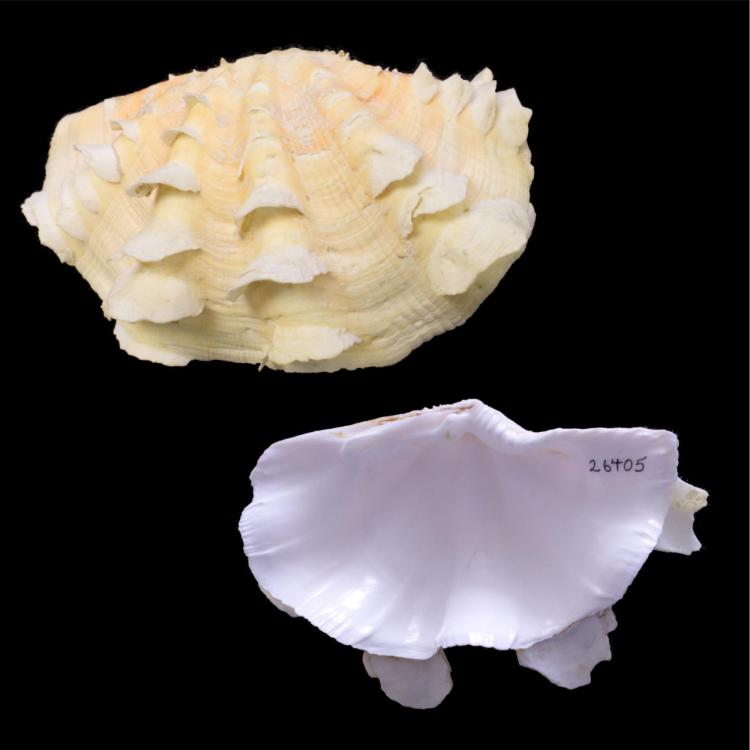The CU Museum is closed we will be opening early in the spring semester.
During this time, collection visits will be available by appointment and other special access requests will be considered on a case-by-case basis.
Please email cumuseum@colorado.edu for more information.
Fluted Giant Clam
Tridacna squamosa, or the fluted giant clam, is a species of giant clam native to the Indian and Pacific oceans. It is the largest living bivalve (named for the two symmetrical shell 'valves' that are connected, or hinged, by ligaments). This endangered species lives primarily in warm shallow reefs and is characterized by the delicate fluted edges of its shell. In the water, a giant clam's spotted mantle—the muscular covering of the clam's soft body inside the shell—can be a variety of colors, including purple, green, and yellow.

Tridacna squamosa is among only a handful of bivalves that engage in photosymbiosis—an evolutionary adaptation allowing them to host photosynthetic algae in their mantle tissues—the algae provide energy to the clam in trade for the clam providng a safe habitat from grazing fish. Giant clams are obligate photosymbionts, meaning they can only survive if algae are living in their tissue. These clams have many adaptations that maximize the efficiency of their symbiont including their leafy fluted shape, a frilly mantle, and lens-like microstructures called ocelli that help get sunlight to the algae. However, because these animals are reliant on algae they are very sensitive to changes in ocean temperature. Like coral, if the temperature gets too hot and their algae dies so too does the clam.
This photosymbiosis is unusual in bivalves, so research has recently been conducted by the CU Museum's Curator of Invertebrate Zoology Dr. Jingchun Li to explore the relationship between giant clams and the other bivalve that hosts dinoflagellates. The analysis of RNA from these organisms demonstrates that giant clams and heart cockles share a common ancestor, but they each independently established photosymbiosis—likely in reponse to similar selective pressures.
Giant clams like Tridacna squamosa are important to the health and well-being of their reef ecosystems. Fluted giant clams and other photosymbionts like them are vital in the trophic and structural integrity of their ecosystems, making the reefs in which they live particularly vulnerable to climate change thus increasing the importance and urgency of the work of CU researchers.

